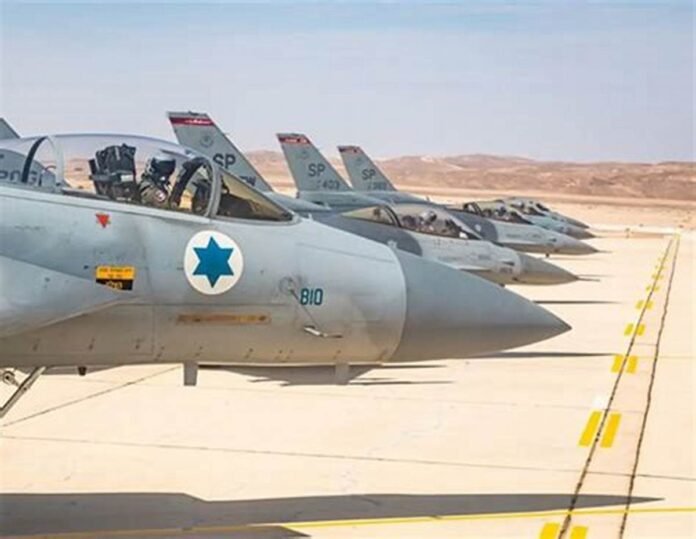Israel’s recent strikes on Iran’s military infrastructure have been described as among the most sophisticated and far-reaching operations in recent years, involving over a hundred aircraft and a coordinated network of intelligence assets. According to Israeli defense officials, these strikes were conducted with “surgical precision,” aimed at dismantling key military targets linked to missile and drone capabilities while minimizing collateral damage. This operation marks a significant escalation in the simmering tension between the two nations, further underscoring Israel’s commitment to countering what it perceives as growing threats from Iran.
Planning and Preparation: Months of Intelligence Gathering
The operation reportedly took months of careful planning and intelligence gathering, relying on a complex network of surveillance assets, including satellite imagery, signal intelligence, and human assets within Iranian territory. Mossad, Israel’s national intelligence agency, is said to have been instrumental in providing critical information on the location and structure of Iranian military facilities, especially those linked to drone manufacturing and missile storage.
Israel’s intelligence network identified specific locations in Iran that housed advanced weaponry, including missile depots, drone launch sites, and command centers. The precision of the strikes, according to sources, was possible only through this extensive intelligence, which allowed Israel to pinpoint high-value targets and reduce the risk to civilians. One Israeli official described the intelligence as “exquisite,” allowing the Air Force to identify weaknesses in Iran’s air defenses and exploit them effectively.
Massive Aerial Mobilization: Over 100 Aircraft Deployed
The operation saw the deployment of over 100 aircraft, including F-35 stealth fighters, F-16 multirole fighters, refueling aircraft, and electronic warfare planes. The F-35s played a crucial role, given their stealth capabilities that allowed them to evade Iran’s air defenses and reach deep into its airspace. F-16s provided additional support, while electronic warfare planes jammed Iranian radar systems, creating corridors for the Israeli fighters to operate with minimal resistance.
The aircraft were launched from multiple Israeli airbases and flew coordinated paths to avoid detection by Iranian radar. Refueling aircraft accompanied the mission to support the F-16s on their return journeys, ensuring that each fighter had enough fuel to strike their targets and exit Iranian airspace without needing to rely on ground-based refueling options. By dispersing the aircraft across various routes, Israel aimed to overwhelm Iranian defenses, minimizing the chances of interception.
Precision Strikes on High-Value Targets
The strikes were designed to be precise and targeted, focusing on critical Iranian military infrastructure. Key targets included missile production facilities, drone manufacturing sites, weapons storage areas, and command centers associated with the Islamic Revolutionary Guard Corps (IRGC). The goal was to weaken Iran’s missile and drone capabilities, which Israel considers a significant threat given recent escalations in drone warfare and missile proliferation across the region.
The precision of the strikes allowed Israel to focus its firepower on military installations while minimizing damage to civilian areas. Israeli officials emphasized that the operation was intended solely to degrade Iran’s military capabilities and was not aimed at civilian infrastructure or population centers. Satellite and aerial surveillance from the aftermath reportedly confirmed the destruction of key installations without extensive collateral damage, according to Israeli military sources.
A New Phase in Israel-Iran Tensions
This operation signals a new phase in the already tense relations between Israel and Iran. Both nations have engaged in proxy warfare across the region, with Iran reportedly supporting Hezbollah in Lebanon, armed groups in Gaza, and other proxy forces hostile to Israel. Israel, in turn, has been conducting airstrikes against Iranian-linked targets in Syria and Iraq for years. However, a direct, large-scale operation within Iranian territory is an escalation that could have significant repercussions.
In response to the strikes, Iran has vowed retaliation, with Iranian officials calling the strikes an “act of war.” The Iranian leadership, including the Supreme Leader Ayatollah Ali Khamenei, condemned the strikes and has hinted at potential retaliatory actions against Israeli interests. Iranian state media reported heightened military readiness across the country, particularly in areas where Israel could attempt further incursions.
International Reactions and Implications
Global reactions have been mixed. The United States, a key ally of Israel, has urged caution while expressing support for Israel’s right to defend itself. The European Union has called for de-escalation, fearing a prolonged conflict could destabilize the region and disrupt global oil supplies. Russia and China, both of whom have strategic interests in Iran, condemned the strikes, warning that continued escalations could lead to regional instability.
The operation has also led to ripples in the oil market, with prices spiking amid concerns that a prolonged conflict could threaten shipping lanes in the Persian Gulf, which handles a substantial portion of the world’s oil exports. Financial markets are wary, with investors closely watching the situation for signs of further escalation.
A High-Stakes Gamble
Israel’s recent strikes on Iranian military targets represent a high-stakes operation with potential global implications. For Israel, the goal was clear: to weaken Iran’s military capabilities and deter future threats. However, the operation has set off a new wave of hostilities that could escalate if Iran follows through on its vows of retaliation.
The strikes underscore Israel’s resolve to act decisively against perceived threats, regardless of geographic boundaries. As both countries assess the fallout, the world is left waiting to see how Iran will respond—and whether this marks the beginning of a prolonged and dangerous standoff in the Middle East.

